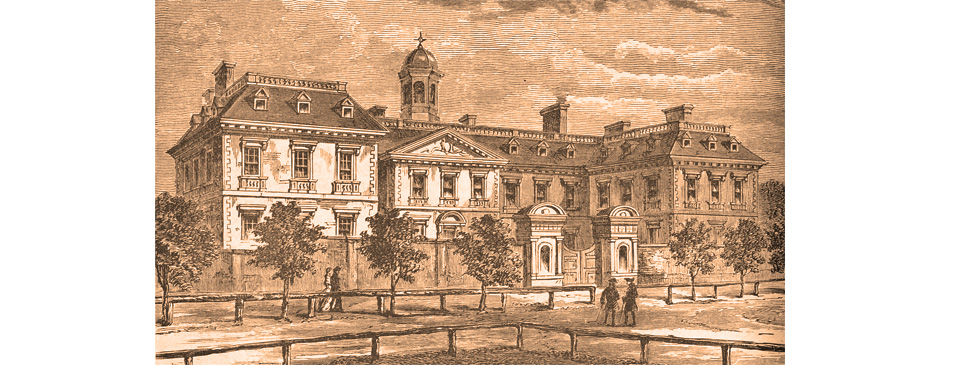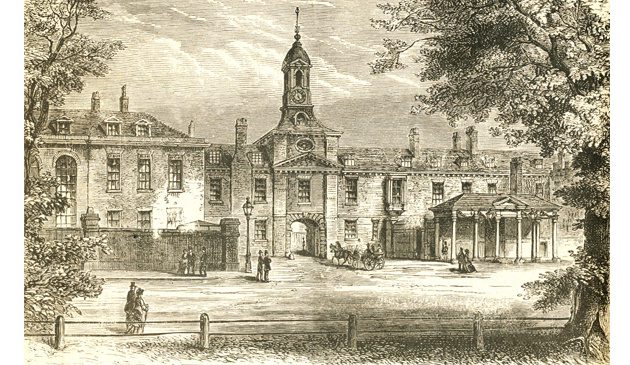The westward growth of London in the 17th century

A 19th century artist’s impression of the Lord Chancellor’s grand mansion Clarendon House on Piccadilly, facing towards St.James’s Palace, in the 1660s. Despite its huge cost it stood for less than twenty years before making way for the new development of Bond Street and Albermarle Street.
Sir John Denham was also building a self-designed house on the north side of Portugal Street. He never completed the work but instead sold the unfinished building to Richard Boyle, Earl of Burlington, who later rebuilt it as Burlington House, completed in 1668. Lord Berkeley of Stratton built the more modest red-brick Berkeley House to the east of Clarendon House. At the rear was the undulating Hay Hill Farm and the streets and mews that were later laid out around Berkeley Square were named Berkeley Street, Stratton Street, Hay’s Mews, Hill Street and Farm Street.
The neighbouring property to Robert Baker’s Piccadill Hall was Shaver’s Hall, which gained its name because it was run as a gaming house by the barber to the Lord Chancellor. The fortunes of Shaver’s Hall never recovered after gaming was banned during the Commonwealth and the land, including some of that of the Baker family, was purchased by a Colonel Panton in 1664. Panton obtained a licence and he, Henry Coventry (Secretary of State under Charles II) and the Wardour family developed houses around Piccadilly Hall.
Arundel House between the Strand and the river had been the London home of the bishops of Bath and Wells until it came under the ownership of the Lord Protector, Thomas Seymour during the short reign of Edward VI in the 16th century. After his downfall the property was purchased by the Earl of Arundel under whose family it remained. In 1678 the then Earl demolished the old Tudor House that had been immortalised in an engraving by Wenceslaus Hollar and in its place laid out Arundel, Howard, Norfolk and Surrey Streets.
By the latter part of the 17th century the district of St.James’s between St.James’s Palace and Piccadilly, then north up to and beyond Oxford Road (Oxford Street, around the modern Oxford Circus) and westwards as far as Bond Street, had been developed. There was thereafter a lull in new developments to the west of London that lasted until the succession of George I in 1714 and the creation of Mayfair.
Sources include: John Summerson ‘Georgian London’; Liza Picard ‘Restoration London’; Peter Whitfield ‘London: A Life in Maps; Lisa Jardine ‘On a Grander Scale’; Count Magalotti ‘Travels of Count Cosmo III Grand Duke of Tuscany’ (1669); Adrian Tinniswood ‘By Permission of Heaven’; ‘The Diary of Samuel Pepys’
< Go back to The creation of Covent Garden
< Go back to In Brief: Late-Stuart London


